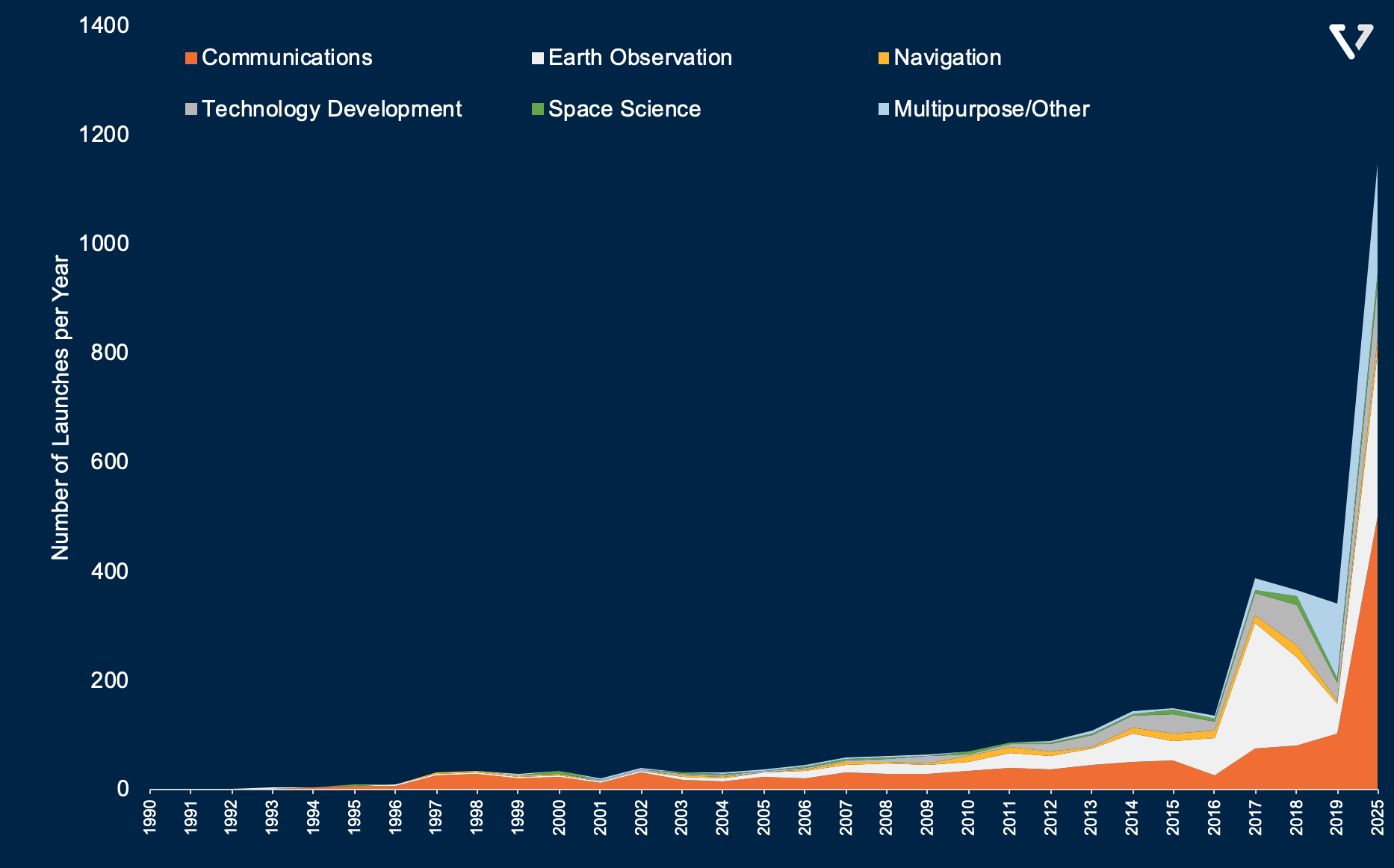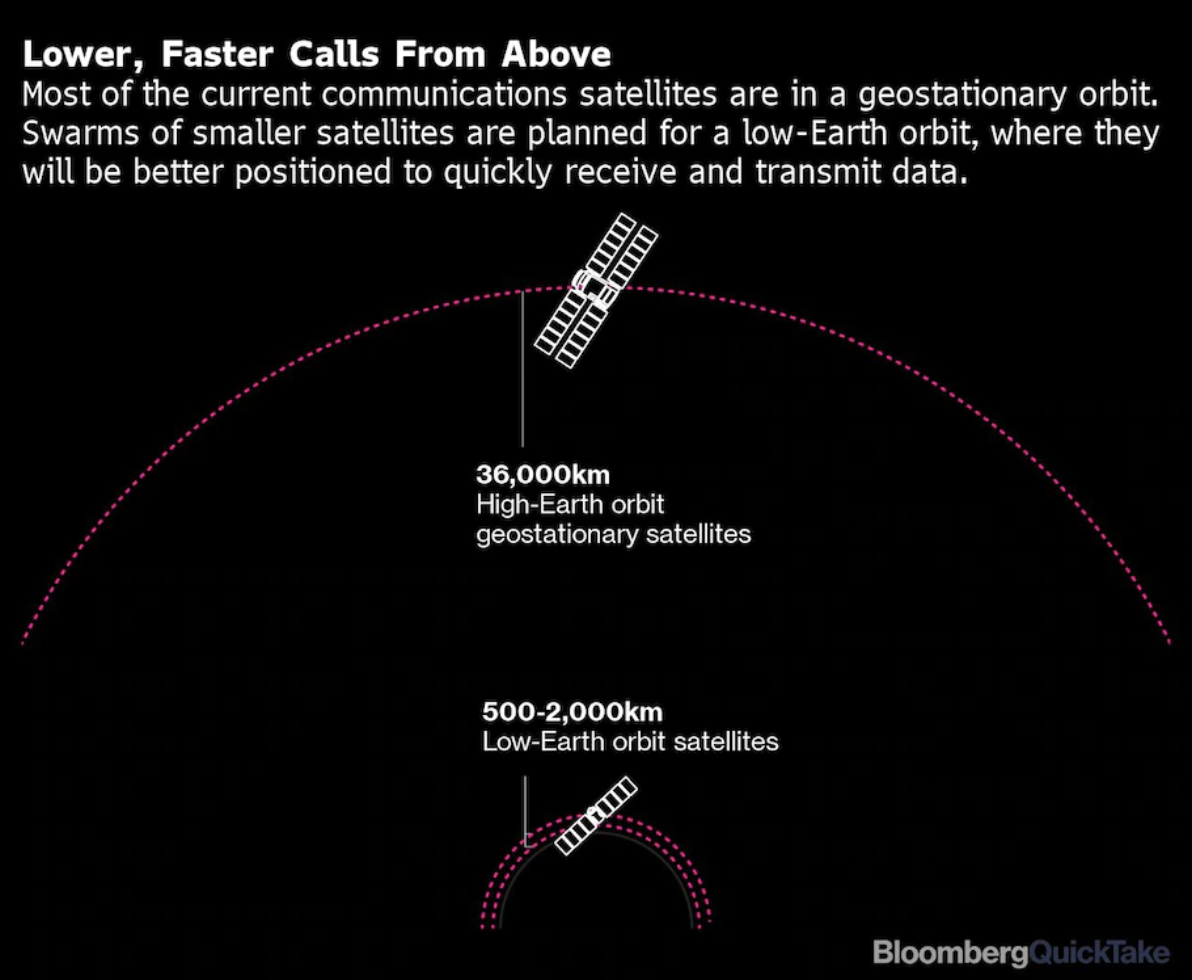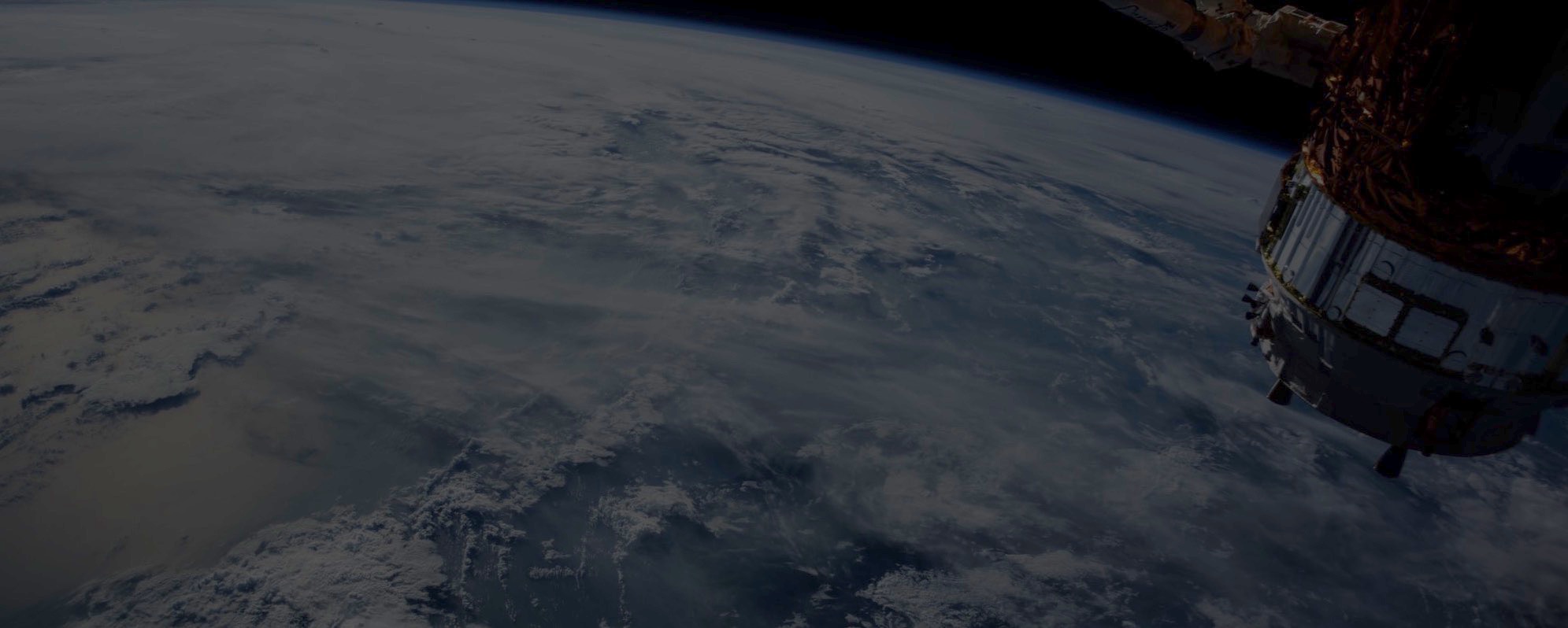In this article, we take a deep dive into the business of space; specifically space internet.
Our sky is changing, rapidly. Due to innovations in rockets, the cost of sending satellites to low earth orbit has declined significantly. With the introduction of Space X’s Falcon Heavy (SpaceX is a private company led by Elon Musk), the cost of launching payload to low earth orbit has gone down by 20X.
As a result, more people are sending more stuff up to space. Currently, there are about 2,200 satellites orbiting earth. But this number is poised to explode in the coming years, thanks to the proliferation of low-cost communication satellites.

As you can see in Figure 1, the largest driver of satellite growth is communications. A bulk of these communications satellites are Low Earth Orbit Satellites (LEO).
LEO Satellites – the future of high-speed internet access
What are LEO satellites?
Unlike the previous-generation communications satellites, the geosynchronous (GEO) satellites, these new LEO satellites orbit the Earth’s surface at a lower altitude. This has a significant impact on cost and applicability of satellites for communications.

Closer to earth means faster data transmission. Because LEO satellites (500 to 2,000 km above earth) are much closer than GEO satellites (36,000 km above earth), they have much lower latency (faster response time), which makes them more suitable for high-speed communication applications.
Closer to earth means the satellites are cheaper, both to send and to produce. Because LEO orbits are typically closer to earth’s surface, the cost of sending these satellites is typically 6X cheaper than sending GEO satellites. And because you can send more cheaply, you can build your satellites with less built-in redundancies. The cost difference has a profound implication on the business model. Since it’s cheaper to send and produce, you can send more satellites, and more often, ensuring that your satellite is always up-to-date with the latest technology (the average lifespan of a LEO satellite is 5 years, shorter than the 8 to 10 year average lifespan of a GEO satellite). At the end of a LEO satellite’s life, its orbit will decay, and it will slowly fall and burn in the atmosphere.
Nonetheless, because they are closer to earth, LEO satellites cannot cover as much area as GEO satellites. As such, a communication network powered by LEO satellites will require more orbiting vehicles to cover the planet. To achieve global coverage, thousands of LEO satellites launched into low-earth orbit collectively operate as “megaconstellations†(Figure 3).

These satellites still need to send their signal back to earth. Therefore, companies interested in building this network either have to invest heavily into infrastructure on the ground or partner with local infrastructure providers. This infrastructure could look like thousands or millions of antennas all around the world which receive signals from satellites and distribute it to consumers on the ground.
Despite requiring massive capital investments, several players are pursuing this opportunity. Currently about half of global households are still without internet access. This is a large, untapped market. As a result, several US and UK companies are now racing to bring the global market affordable and high-speed internet access.
Who are the large players in the industry?
To achieve this vision, a lot of capital is required. As such, only large technology companies are truly in the running to make this vision come through. Some of key players in the LEO Satellite market include:
- SpaceX: SpaceX’s project, Starlink, is likely the category leader, at least when judged by the quantity of satellites launched. In 2020, SpaceX became the operator of the largest active satellite constellation, with 180 satellites orbiting Earth. Over the next decade, it aims to launch 42,000 satellites to the Earth’s orbit. Recently, the Federal Communications Commission (FCC) approved a planned launch of 12,000 satellites, with an additional 30,000 pending approval. SpaceX has estimated that completing Starlink may cost more than US$10 billion. Nonetheless, Musk estimated that it could bring in US$30 billion to US$50 billion per year once the network is fully operational
- Amazon: Not to be outdone by Elon Musk, Jeff Bezos’s Amazon, in partnership with Blue Origin (another Jeff Bezos company), recently committed more than US$10 billion into its LEO satellite initiative (Project Kuiper). The FCC has also granted the company approval to launch another 3,236 satellites.
- OneWeb: Amid a bankruptcy proceedings and a pending sale, Oneweb secured US approval to launch an additional 1,280 satellites to its existing 720 satellites. With 47,844 satellites pending approval as of May 2020, The UK based company also needs to win the additional approval from UK regulators to execute their launches.
What can you do with LEO satellite-based communications?
Ok, let’s fast forward 5 to 10 years. Earth is covered by these mega constellations of LEO satellites. What are the implications?
Fast internet for everyone, everywhere. Whether you are in the rural United States, sub-saharan Africa, or rural India, you will have access to fast data speeds. What are the implications of this? Well, it could have a similar effect to the changes brought on by Jio when the company made the internet cheap and abundant in India. Internet penetration shot up, and demand for devices, media consumption and e-commerce transactions grew. These benefited US companies such as Amazon, Netflix and Facebook in India. Reed Hastings (the CEO of Netflix) even went as far as to say that “We hope someone would do a Reliance Jio in every other countryâ€.
If you follow the narrative thread of Jio: Once the company expanded access to the internet, it created cheap feature phones to broaden access even more. And now it is looking to expand horizontally by providing its own digital services (payments, media, messaging, etc) – building a super app to service the ecosystem.
With global internet connectivity, the same transformation can happen at a global level. Of the two largest players we’ve mentioned (SpaceX and Amazon), Amazon may be primed to capture the digital layer opportunities since it has ecommerce and media capabilities. On the other hand, in terms of space technology, SpaceX has the most advanced rockets with the most satellites deployed so far.
Regardless of who wins, the changes that will be brought upon the world will be dramatic.









